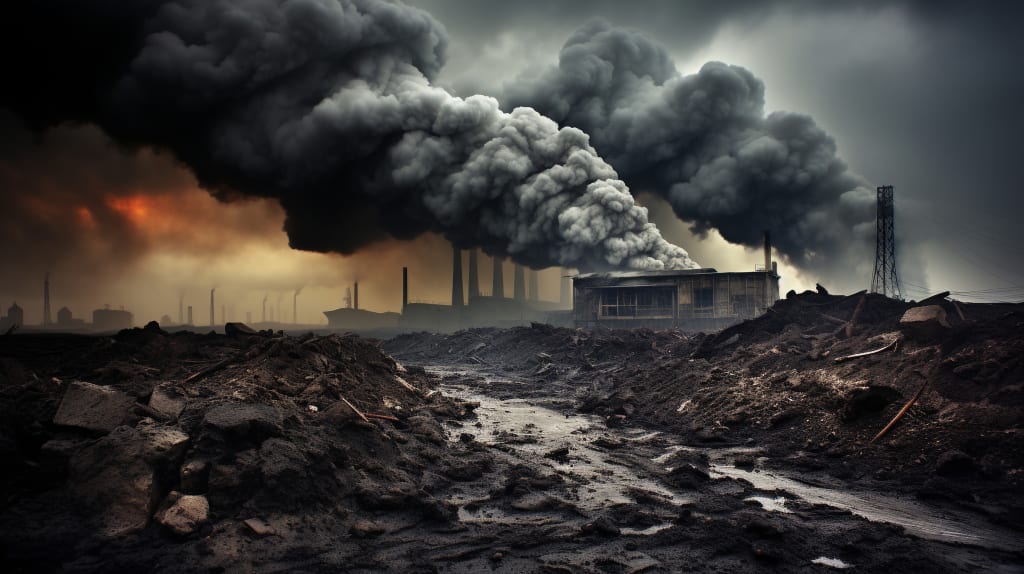From Trash to Ash: The Role of Incineration in Reducing Landfill Waste
Organizations such as CWT (Cleanco Waste Treatment) utilize the incineration method for sustainable waste management.

As global waste issues escalate, finding sustainable solutions becomes increasingly urgent. Incineration, involving the high-temperature combustion of waste, has gained prominence. It offers efficient waste disposal by reducing waste volume significantly and converting it into energy. Despite concerns about emissions and ash disposal, technological advancements in incineration plants ensure better environmental outcomes. By integrating this method with recycling and stringent regulation, it becomes a pivotal tool in managing waste while minimizing environmental impact.
Let’s explore the role of incineration in reducing landfill waste, delving into its benefits, challenges, and the future of waste management.
Understanding Incineration: A Brief Overview
Ash, flue gas, and heat are produced during the waste treatment process known as incineration. The process involves burning waste at temperatures ranging from 850 to 1,100 degrees Celsius. Waste is transformed into a more manageable form by this procedure, which drastically decreases its volume. But how exactly does this process contribute to reducing landfill waste?
The Benefits of Incineration
The list of benefits that we get from the incineration process are as follows:-
Volume Reduction
The huge reduction in trash volume is one of the main benefits of incineration. Up to 90% of the waste volume can be eliminated by incineration. This reduction means that the waste that would have otherwise ended up in landfills takes up far less space, prolonging the life of existing landfills and delaying the need for new ones.
Energy Recovery
Another critical benefit is energy recovery. The heat generated during the incineration process can be converted into electricity or used for district heating. This dual-purpose approach not only helps in waste management but also contributes to energy production, providing a renewable energy source.
Decrease in Greenhouse Gas Emissions
Incineration has the potential to lower greenhouse gas emissions when compared to landfilling. Landfills produce a significant amount of methane, a potent greenhouse gas, as organic waste decomposes anaerobically. Incineration, on the other hand, primarily produces carbon dioxide, which has a lower global warming potential than methane.
Safe Disposal of Hazardous Waste
Incineration is particularly effective for the safe disposal of hazardous and medical waste. High temperatures ensure the destruction of pathogens and toxic substances, rendering the residual ash safer for disposal.
The Environmental Impact of Incineration
Incineration’s environmental impact includes:-
Air Pollution Concerns
Incineration does have certain disadvantages, though. One of the primary concerns is air pollution. The process releases various pollutants, including dioxins, furans, particulate matter, and heavy metals, which can have harmful effects on human health and the environment. Modern incineration plants, however, are equipped with advanced pollution control technologies to mitigate these emissions.
Ash Disposal
The residual ash from incineration, although significantly reduced in volume, still needs to be managed. Bottom ash can be used in construction, while fly ash often contains higher concentrations of toxic substances and requires careful handling and disposal.
Resource Loss
Incineration can lead to the loss of potentially recyclable materials. Metals and other valuable resources may end up being burned instead of being recovered and reused. This highlights the importance of integrating incineration with robust recycling programs to maximize resource recovery.
Advances in Incineration Technology
Technological advancement in incineration are:-
Improved Emission Controls
Systems for controlling emissions have become increasingly effective as a result of technological developments. These include electrostatic precipitators, fabric filters, and scrubbers that capture harmful pollutants before they are released into the atmosphere.
Waste-to-Energy Plants
Modern waste-to-energy (WtE) plants are designed to maximize energy recovery while minimizing environmental impact. These plants incorporate advanced combustion technologies, such as fluidized bed combustion and gasification, which enhance efficiency and reduce emissions.
Circular Economy Integration
Integrating incineration within a circular economy framework can optimize its benefits. By ensuring that recyclable materials are extracted before incineration and that the residual ash is used in construction, we can create a more sustainable waste management system.
The Role of Policy and Regulation
Key features of policy and regulations are:-
Stringent Emission Standards
Government regulations play a crucial role in ensuring that incineration plants operate safely and sustainably. Stringent emission standards and regular monitoring are essential to minimize the environmental impact of incineration.
Incentives for Waste Reduction and Recycling
Policymakers can also incentivize waste reduction and recycling through tax breaks, subsidies, and grants. By promoting waste separation at the source and supporting recycling programs, the reliance on incineration can be reduced.
Public Awareness and Participation
Raising public awareness about waste management practices and the benefits of incineration is vital. Educating communities about the importance of waste reduction, recycling, and proper disposal methods can lead to more effective waste management systems.
The Future of Incineration
Innovations in Technology
The future of incineration lies in continuous innovation. Emerging technologies, such as plasma arc gasification and pyrolysis, promise to enhance the efficiency and environmental performance of incineration processes.
Integration with Renewable Energy Sources
Combining incineration with other renewable energy sources, such as solar and wind power, can create more resilient and sustainable energy systems. This integrated approach can help mitigate the intermittency of renewable energy and provide a steady energy supply.
Holistic Waste Management Approaches
It is important to handle waste management holistically, incorporating composting, incineration, recycling, and waste reduction. By prioritizing waste hierarchy principles, we can ensure that incineration is used as a last resort, primarily for non-recyclable and hazardous waste.
To Wrap Up
Incineration plays a crucial role in reducing landfill waste by significantly decreasing the volume of waste and providing energy recovery opportunities. However, it is essential to balance its benefits with its environmental impact. By leveraging technological advancements, enforcing stringent regulations, and promoting public awareness, we can harness the potential of incineration while minimizing its drawbacks.
Organizations such as CWT (Cleanco Waste Treatment) utilize the incineration method for sustainable waste management. As we move towards a more sustainable future, integrating incineration within a comprehensive waste management strategy will be key to effectively addressing our waste challenges.
About the Creator
Enjoyed the story? Support the Creator.
Subscribe for free to receive all their stories in your feed. You could also pledge your support or give them a one-off tip, letting them know you appreciate their work.





Comments
There are no comments for this story
Be the first to respond and start the conversation.